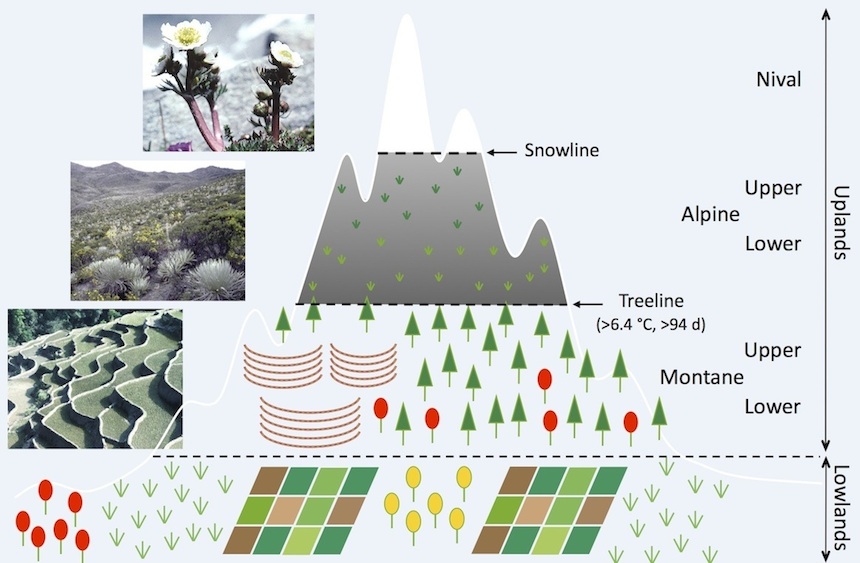Bioclimatic belts definition
Bioclimatic belts in mountains
For a global comparison of mountain biota it is essential that the latitudinal change in life conditions with elevation is accounted for. Hence, elevational belts have to be converted into climatic belts that account for the rise of isotherms as one approaches the equator.
The seven thermal life zones (thermal belts) proposed by Körner et al (2011) (PDF, 2.0 MB) are defined by temperature only and therefore account for the latitudinal change in elevation of thermally similar areas. All belts are defined based on a common reference, which is the high elevation climatic treeline. This treeline separates the treeless alpine belts (including the lower and upper alpine and the nival belts) from the potentially forested montane belts (including the upper and lower montane and the lower belts) based on temperature criteria. Thermal belts are defined by a model using WorldClim climate data (daily air temperatures and snow cover) and field data from across the globe that characterize the position of the potential high elevation climatic treeline, irrespective of the actual presence or absence of trees in a given area (Körner and Paulsen 2004)
Detailed information about the bioclimatic belts is available in Körner et al (2011) (PDF, 2.0 MB).


